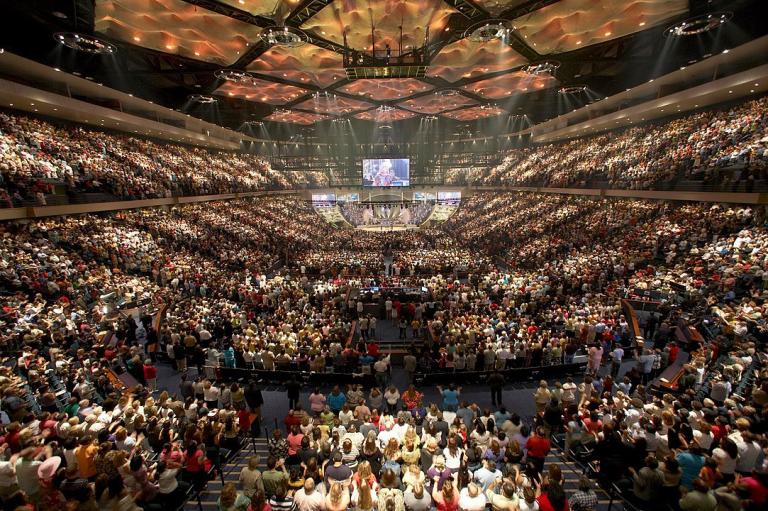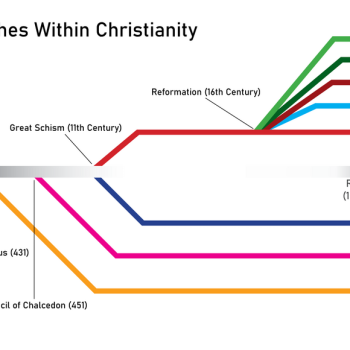Big, densely-populated cities are being hit hardest by the coronavirus epidemic. Big gatherings in general–as in sporting events and conventions–are also losing lose their luster for health reasons. Might this also mean that the vogue of big churches–the era of the megachurch–is ending?
The coronavirus epidemic is taking its biggest toll on New York City and other densely-populated huge cities that are dependent on mass transit. Since we can expect more such epidemics in the future, some people are speculating that the population might undergo a “de-urbanization.” From Jim Geraghty, Moving Out and Not Coming Back: The Coming De-Urbanization of America, in National Review:
Yesterday on my work Facebook page, a reader asked, “Why is it that the places Covid-19 show up the most are in Democrat controlled areas?” As much as I’d like to believe that all the troubles in the world can eventually be traced back to Bill de Blasio, I responded, “Probably because ‘the places it shows up the most’ are large densely-packed cities with a lot of international and domestic air travel and high use of mass transit, where Democrats have been winning elections more than Republicans for at least a generation and in many cases several generations.”. . .
At some point the coronavirus crisis will end, but one of the extraordinarily difficult lessons of this ordeal is that the catastrophic scenarios that sound like something out of science fiction can happen in real life, and that the vast majority of us are at the mercy of fate in these scenarios. As mentioned last week, whichever way SARS-CoV-2 jumped into humans — a lab accident, wet markets, exotic-animal trader, a farmer using bat guano for fertilizer — it can happen again with another virus. . . .
We will be thinking about the risk of global pandemics and how to mitigate them for a long time to come. And that will start to influence Americans’ decisions about where they want to live. . . .
And now we are learning, once again, that densely packed cities are particularly dangerous places to be during a disease outbreak. . . .
The world has been forced to embrace telework and experiment with working from home like never before. The need for white-collar workers to all be in one central location — and paying some considerable rent for that office space — is shrinking before our eyes.
When authorities require or recommend you stay inside your home, your home becomes exponentially more important — not just a place to sleep and store your stuff. Kitchens matter when you’re cooking almost every meal at home. A yard, patio, deck, porch, or gazebo gives you the ability to enjoy fresh air within your own space.
Who knows if the coming year or two will have on-and-off social distancing and stay-at-home orders? All of those glorious amenities of the city aren’t that appealing if they’re closed.
Just as living in a big city packed in with millions of other people has been fashionable, going to a church with thousands of other people packed into a sanctuary has also been fashionable. The coronavirus, though, and the prospect of other epidemics might shift people’s preference away from gigantism–giant cities, giant corporations, giant churches–to an appreciation for a smaller scale.
Even the social deprivation created by the epidemic lockdown could contribute to a desire for smaller, more intimate communities and congregations.
Already, megachurches are being hit the hardest by the COVID-19 shutdown. Though they often have sophisticated studio facilities, making for polished online services, the central large-church experience of worshipping as part of a gigantic crowd–with the emotional experience that fosters–is no longer possible. The effect of the technology is to break down the mass experience.
Our small congregation would not have problems following guidelines that no more than 50 people should gather together observing social distancing. Megachurches can’t do that without breaking down their services into a number of small congregations. A church with 5,000 members would have to run 100 services!
Our congregation could manage with the guidelines that no more than 10 people should gather together, though this would require a number of small services. Megachurches can’t do that unless they turn into an assemblage of small groups.
In fact, church growth expert Ed Stetzer is recommending that, saying that churches can learn from the COVID-19 crisis to “be a church of small groups rather than a church that has small groups.”
Or we could be a church of small congregations, where members could all know each other and receive spiritual care from their pastor.
Photo: “Lakewood Church [in Houston, TX] meets in a former sporting arena with seating for 16,000,” by ToBeDaniel at Italian Wikipedia. – Transferred from it.wikipedia to Commons., CC BY 3.0, https://commons.wikimedia.org/w/index.php?curid=38716905
Consider that photo: Would you really want to be in a crowd like that today?













